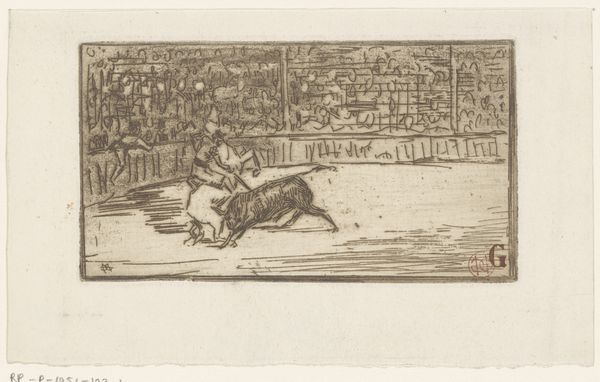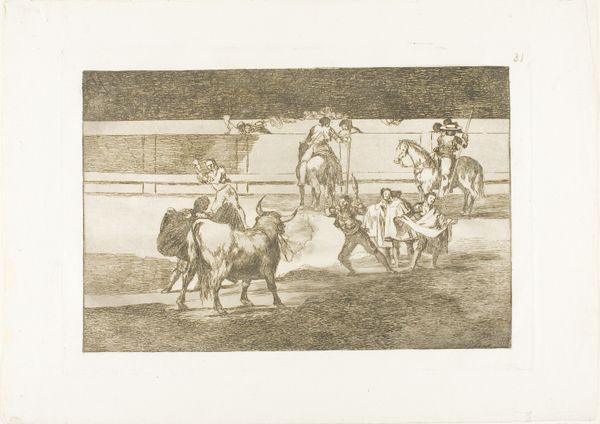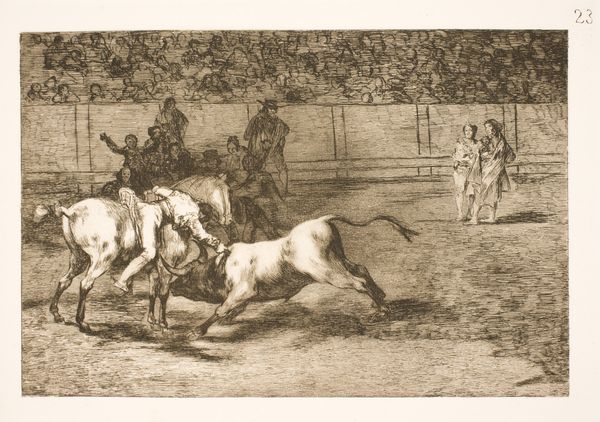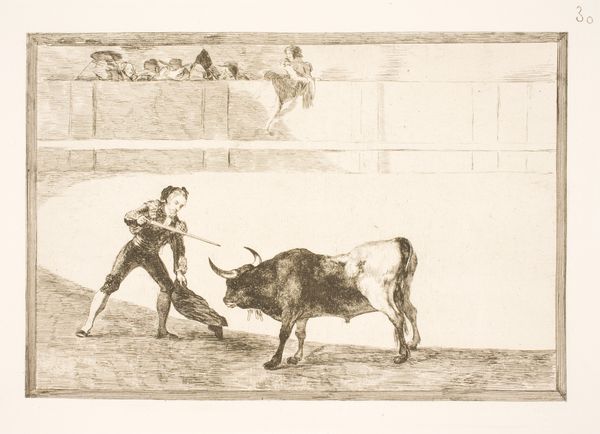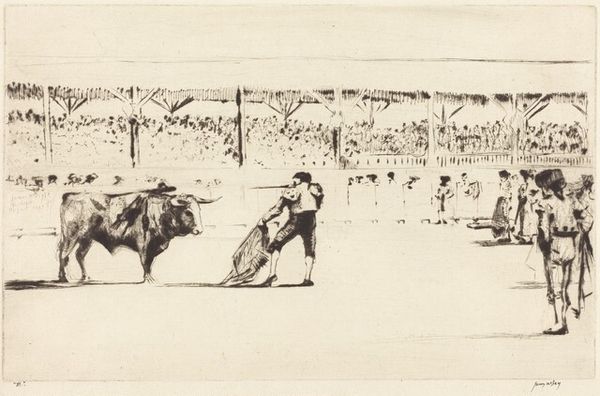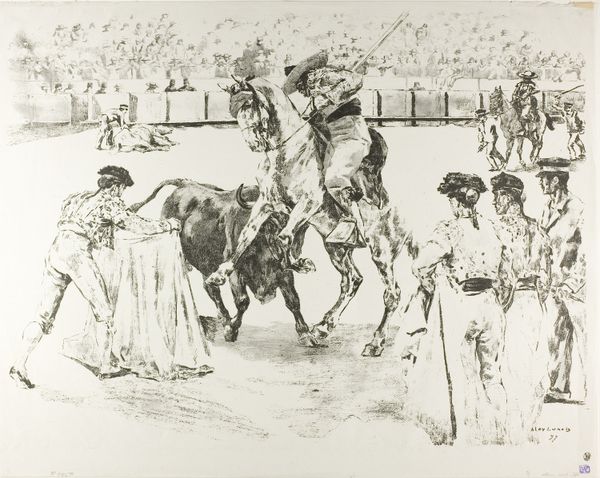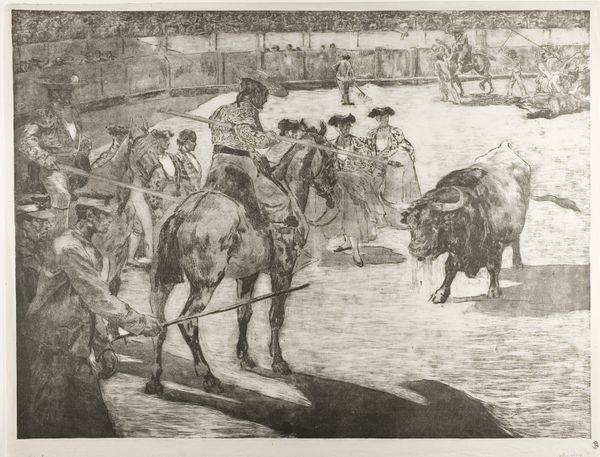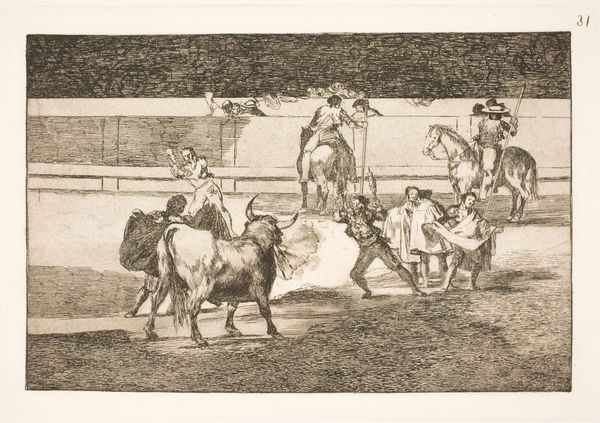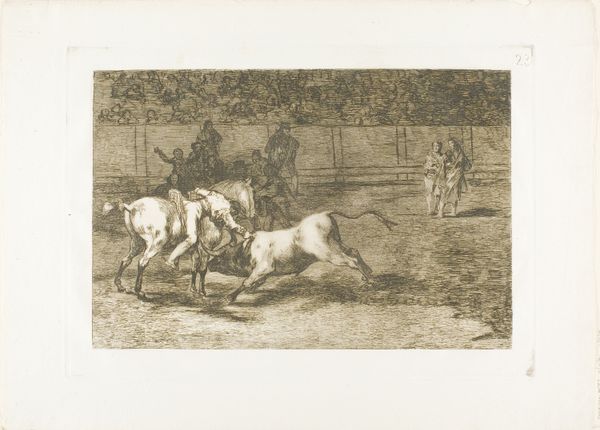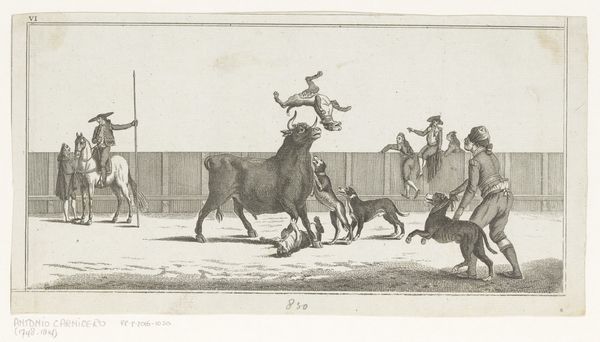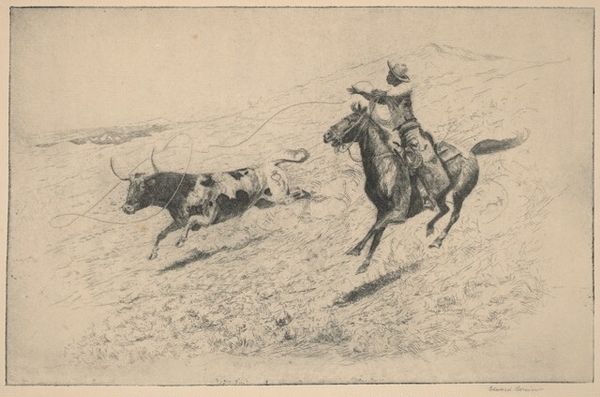
graphic-art, print, etching
#
graphic-art
# print
#
etching
#
genre-painting
#
realism
Copyright: National Gallery of Art: CC0 1.0
Curator: This etching, created by James McBey in 1911, is titled "The Banderillas." It captures a moment during a bullfight. What strikes you most when you look at it? Editor: The immediacy! It's incredibly dynamic. The strong contrast in the foreground pulls the viewer into the drama, that intense moment of encounter. The loose etching gives a sense of spontaneous motion—almost a blur of movement and tension. Curator: Yes, McBey truly captures the performative nature of the bullfight, it was a really central feature in the cultural landscape. Bullfighting arenas were social stages, imbued with traditions and codes deeply woven into ideas of masculinity, courage, and national identity. The graphic arts played a vital role in communicating the culture of bullfighting. Editor: Absolutely. I wonder how much of this particular artist's work, technique, even, contributes to its effect? Look at how he employs line—it’s economic yet powerfully descriptive, suggesting the textures of the bull's hide, the swiftness of the matador's movement... it all works in support of realism. And observe, also, the overall lack of tonal gradations— it focuses all our attention on stark contrasts. Curator: And within these spectacles there was hierarchy too; from the bullfighter to his team to spectators to people outside the arena itself – everyone had a prescribed place, much of which were gendered and related to wealth and standing in society. Consider that these works were disseminated among various levels of society to communicate and celebrate an idealized vision of what bravery meant. Editor: Yes. Despite the etching being fairly spare and uncluttered compositionally, it manages to convey the crowd's energy in the background, even if they appear as just sketched outlines. It is also true to that idea about social messaging. The high-contrast rendering reinforces the power dynamic, doesn’t it? The active stance and heavy presence of the bullfighter on the left is balanced, quite pointedly, with the much stiller form on the right, waiting... perhaps the future state. Curator: Looking closer it really captures the spirit of early twentieth century Spain, when popular culture became infused with the ideals of modernisation while still holding tightly to many long standing national traditions like bullfighting as an identity. I can almost hear the sounds from this arena captured in a permanent pose. Editor: Indeed. Seeing McBey’s use of contrasts so skillfully makes me appreciate the intensity he conveys through pure graphic means. I come away quite impressed by its economical delivery.
Comments
No comments
Be the first to comment and join the conversation on the ultimate creative platform.
